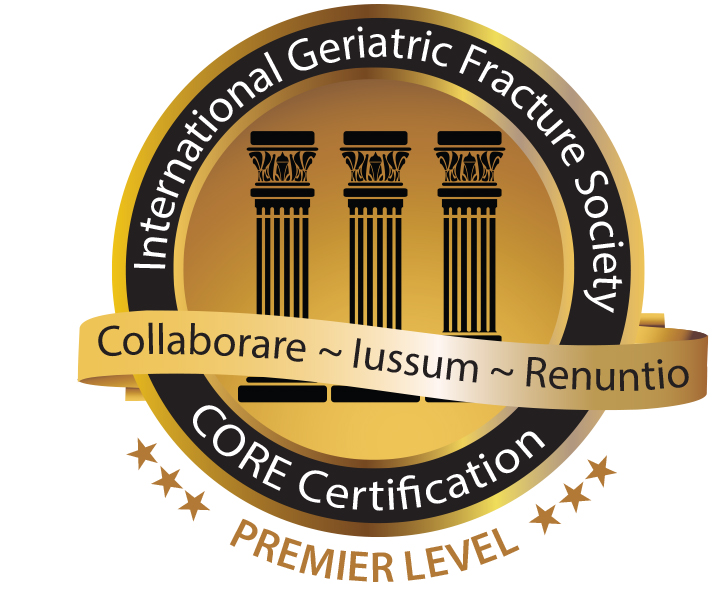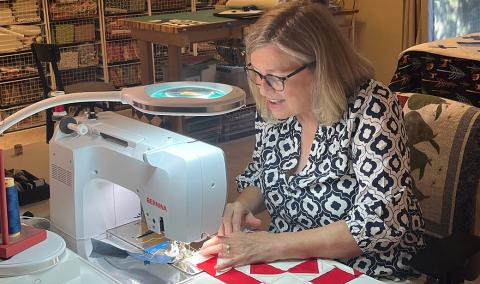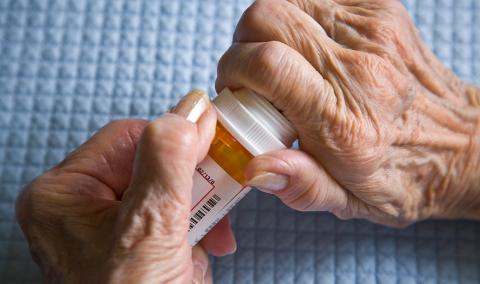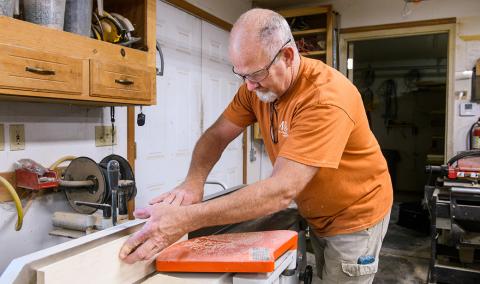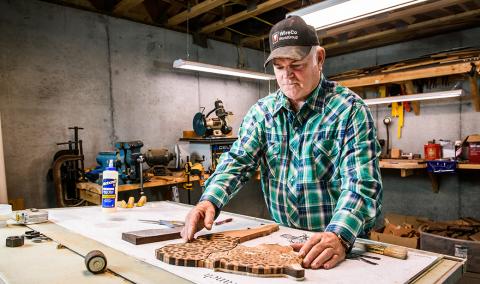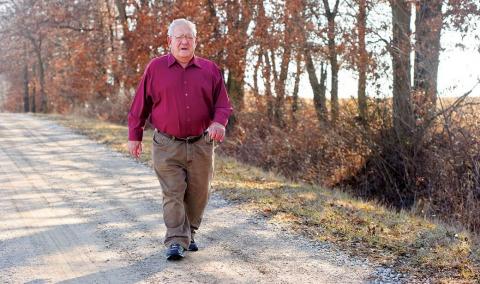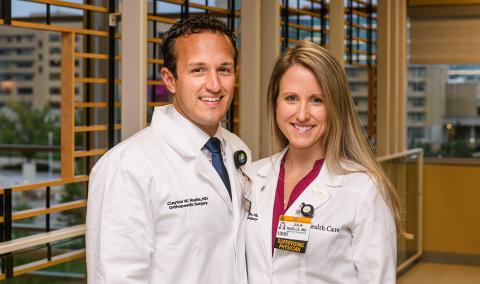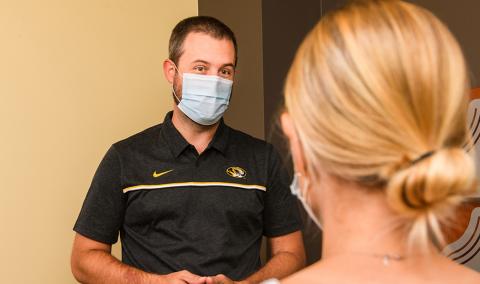If you are concerned about osteoporosis or have recently experienced a fracture with little or no trauma, further evaluation through University of Missouri Health Care's Bone Health Program will help you assess your risk of osteoporosis. Maintaining optimal bone health improves your quality of life and decreases the risk of future fractures.
Our comprehensive program will evaluate, screen, diagnose and educate you about your bone health. Our team — which includes experts in exercise, physical therapy and nutrition — will then work with you to create a personal treatment plan to care for your bones. We want to help you by building and maintaining your bone health and reducing your risk of fractures.
The program has two key components:
- If you are concerned about your bone health or osteoporosis, we can address your concerns in our bone health clinic.
- We can care for you after a low-impact fracture through our Fracture Liaison Service. The Fracture Liaison Service works closely with our orthopaedic providers to look beyond the fracture and help address the underlying cause of the fracture with a bone health evaluation.
Why is Bone Health important?
Strong bones support your body and allow you to move. Bones protect your organs from injury and store vital minerals you need to live. Weak bones can break and cause pain, leading to difficulty walking without assistance. Bones begin to weaken early in life without the right diet and exercise, and many people have weak bones without knowing it. This is a disease called osteoporosis, which can lead to bones breaking with little or no trauma causing pain. These broken bones are known as fragility fractures. Osteoporosis is a "silent disease," so bones can thin and become more brittle without you knowing it. Studies suggest that about half of women and 25% of men 50 and older will have a broken bone related to osteoporosis.
Diagnosis
We’ll use a combination of the following methods to evaluate your current bone health:
Medical history: We will ask questions to assess your bone health and risk for osteoporosis. It is important to let your provider know which medications you have been taking during the last 10 years, as some can increase your risk for low bone mass and fractures.
Physical examination: Your provider will give you a limited physical exam with emphasis on the spine. Many fragility fractures go unnoticed by patients. Loss of height can be a good indicator of vertebral fragility fractures.
Lab tests: We’ll perform some lab tests specific to bone health, unless your medical records indicate you’ve received these exams in the last six months.
X-rays: An X-ray can help us determine if you’ve had any fragility fractures of the spine.
Bone density scan: If any tests indicate probable loss of bone density, and you haven’t had a bone density scan in the last year, we will make arrangements for you to have one. This will help us confirm a diagnosis of osteoporosis and document the severity of bone loss.
Treatment
Your treatment plan might include medications for osteoporosis, and those fall into two categories: antiresorptive medications to slow bone loss or anabolic drugs to increase the rate of bone formation.
Antiresorptive medications: Your bones are continually losing and replacing tissue. These medications work to slow down the pace of tissue being lost while your body continues to generate new bone tissue.
Anabolic drugs: With the ability to increase bone mass and strength, anabolic drugs can build healthier bones while reducing the risk of fragility fractures.
Geriatric Pelvic Fracture
Broken bones are painful, but treatment usually follows a set course: Casting or surgical repair. But for older people or those with bone health conditions such as osteoporosis who break their pelvis, this isn’t the case. Often, pain lingers for months or years after the break because the standard treatment was bed rest, not repair.
At MU Health Care, our doctors offer solutions to repair geriatric pelvic fractures. Using either fixed cannulated screws or flexible screws that become rigid after they are implanted, our pelvic fracture treatments can relieve pain, repair the broken bone and help you regain lost function.
For some people, nonsurgical treatment meant a vicious cycle of pain and decrease in muscle strength that results in difficulty moving without help. But developments in treatment now mean that pelvic fractures can be treated and repaired for those who do not get better following bed rest. If you have suffered a pelvic fracture, call us or ask your doctor for a referral to discuss your treatment options.
As part of our Bone Health Program, pelvic fracture treatment includes a bone health assessment and access to physical and occupational therapy as needed.
For more information or to schedule an appointment, please call 573-882-3729.
Related Conditions & Treatments
- Chiropractic Care
- DEXA (DXA) Scan
- Elbow Pain and Injuries
- Foot and Ankle Pain
- Bone Health Program
- Hand and Wrist Pain
- Hip Pain
- Joint Health Program
- Knee Pain
- Limb Preservation Center
- Orthopaedic Oncology
- Orthopaedic Rehabilitation
- Orthopaedic Trauma
- Pediatric Orthopaedics
- Physical Therapy
- Regenerative Orthopaedics
- Sarcomas
- Shoulder Pain and Injuries
- Sports Medicine




